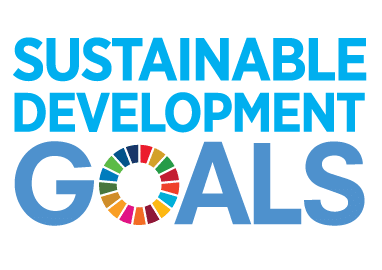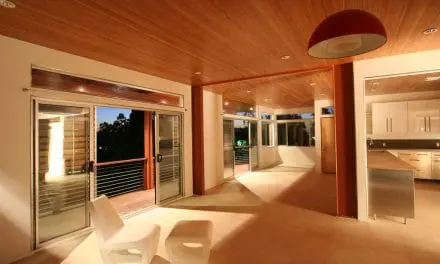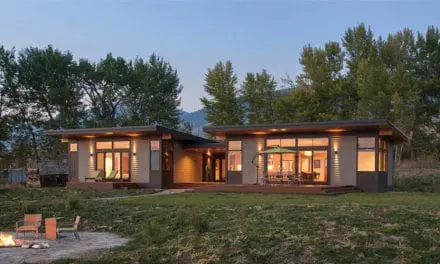What You Need to Know About the UN Sustainable Development Goals Before You Build or Renovate
You can help protect our environment from the comfort of your home. If you feel overwhelmed figuring out how to balance a robust economy with the health of the planet, a great vision for sustainable growth can be found in the United Nations Sustainable Development Goals (SDGs). These goals were established as a “shared blueprint for peace and prosperity for people and the planet, now and into the future”. As buildings account for 40% of CO2 emissions in the United States, transforming your existing home or constructing a new eco-friendly home is an amazing step in the right direction. Green homes are designed to be built and operated on sustainable practices for lower use of resources and healthier living.
Now how can you begin making a difference? Go over the SDGs, choose a project and evaluate against the goals. We have provided some ideas and inspiration. Use these as inspiration for your own vision!
No Poverty – Economic growth must be inclusive to provide sustainable jobs and promote equality
Social theorist and governmental advisor, Jeremy Rifkin, inspires us all with a vision of a new industrial revolution in which explosive economic growth will be achieved through virtually free energy and a sharing economy. The transformation will migrate many aspects of life from an ownership model to a use mode. Renewable energy is even being shared by homes and businesses, as well as microgrids and selling energy to support the grid. Companies and cities are partnering to retrofitting existing buildings to energy efficient standards, bringing quality jobs and cost savings to low income neighborhoods.
Zero Hunger – End hunger, achieve food security and improved nutrition and promote sustainable agriculture
Choosing building sites that are do not displace existing farmland is a good place to start. Renovate an existing home, or choose a site that has already been developed. Gardens can be turned into edible landscapes and used to supply our own food. We can also find inspiration from urban vertical farms and silvopasture. These farming methods have amazing benefits and share common goals with initiatives such as the Living Food Challenge to help transform the current food system into one in balance with soil and water cycles.
Good Health & Wellbeing – Ensure healthy lives and promote wellbeing for all at all ages
A high performance home is a healthier home. Breathing in clean air can protect us from many unwanted health risks. It all starts with improving our indoor air quality by staying alert to things such as proper filtration and ventilation. Choosing materials wisely, reduces or even eliminates toxic chemicals in materials which cause VOCs.
Quality Education – Ensure inclusive and equitable quality education and promote lifelong learning opportunities
For more green homes to be built we will need an educated workforce on specific skills. This can start in Green Schools where students of all ages are learning about topics surrounding sustainability. Green schools not only teach about sustainability, high performance building methods improve student health and increase cognitive performance and memory.
Gender Equality – Achieve gender equality and empower all women and girls
Gender inequality is very present in the construction sector as only 11% of the workers in sampled countries are women. However, around the world we see each day amazing examples of incredibly smart and capable women being leaders and pioneers in green building. Workforce development and mentoring programs aimed at addressing the gender disparity are being rolled out and should be reflected in the teams your use for your projects.
Clean water and sanitation – Ensure availability and sustainable management of water and sanitation
Green homes can incorporate efficient and sustainable water and sanitation systems that reduce potable water usage, treating rainwater or greywater, and allow for reuse of processed water into irrigation or toilet flushing. In fact, buildings and homes with systems that allow for net-zero water usage are now becoming a reality, even in dry climates. Treating potable water as a valuable commodity and using water efficient fixtures, appliances, and landscaping.
Affordable & Clean Energy – Ensure access to affordable, reliable, sustainable and modern energy
Starting in 2020 residents of California will need to have solar power installed in their new homes, in tandem with the move to generate power on the electric grid with renewables such as solar energy and wind power. The Inflation Reduction Act will help fund the conversion to renewable energy and storage systems, as well as electrification of new and renovated homes. Our energy future is reliable, resilient, and renewable!
Decent Work & Economic Growth – Promote inclusive and sustainable economic growth, employment and decent work for all
From solar photovoltaic installer (the job projected to have the fastest employment growth), to technicians, to scientists, the green economy is robust. And these are quality jobs, the median income is higher than the median income for all workers. Again, the Inflation Reduction Act has funding for the training the US will need to jump start this boom. Investing in the greening of our buildings will boost the world economy.
Industry, Innovation & Infrastructure – Build resilient infrastructure, promote sustainable industrialization and foster innovation
There is a need to not only think about today, but to also heavily consider our future. Building and transforming houses into green homes means thinking about their adaptability to the rapidly changing climate. Green homes are naturally suited for resilience. Water efficiency and management eases the burden on potable water usage and sewage systems. Renewable energy can continue functioning even after catastrophic events such as Hurricane Maria in Puerto Rico.
Reduced inequalities – Reduce inequality within and among countries
We need to accelerate innovative solutions to housing shortages. As the cost of energy falls, disadvantaged communities will have improved access to water and economic incentives. “Free” energy may seem like a utopian thing to think of, but around the world many homes and businesses are able to sell their excess energy to main grids by serving as micro-energy plants powered by renewable energy.
Sustainable Cities & Communities – Make cities inclusive, safe, resilient and sustainable
Communities around the world are redefining how they will grow in the coming centuries. The C40 Cities initiative highlights the ways in which local entities are taking bold steps for sustainable growth and resilience. Organizations like the Living Future Institute are helping with initiatives such as the Living Community Challenge which focuses on positive impact for the environment by measuring sustainability efforts and finding solutions for planning limits. Cities are cooperating in their planning for net zero and other sustainable quality of life metrics.
Responsible Consumption & Production – Ensure sustainable consumption and production patterns
In order to push for a sustainable economy, we must consider one in which our waste can once again become the primary product. William McDonough has pioneered the cradle to cradle approach which ensures full consideration of all environmental and societal impacts. The concept of “right sizing” our homes is also part of using our fair share. Homes are also being designed to reduce the amount of carbon which was required to build them by choosing materials which lower embodied carbon.
Climate Action – Take urgent action to combat climate change and its impacts
Homes and buildings can emit dangerous greenhouse gases that affect our environment. However, the opportunity remains for all to take action and help reverse such harm. Decarbonization of the built environment will be key to meeting the reversal and drawdown of atmospheric carbon. Feeling ambitious? Check out how to turn your house into a zero energy home and/or store carbon in the building itself (such as reduced carbon concrete or sustainably sourced wood). We can attain net zero carbon in our built environment.
Life below water – Conserve and sustainably use the oceans, seas and marine resources
Homes anywhere can minimize water waste and the waste in general that enters water streams and can wash up in our oceans. Products for reusing greywater are also a smart addition to any green home as they can lessen the strain on aging sewer systems, preventing sewage runoff during storms and saving potable water for critical needs.
Life On Land – Sustainably manage forests, combat desertification, halt and reverse land degradation, halt biodiversity loss
Enhancing our environment’s biodiversity can start in your own backyard. Simply by incorporating local flora in your landscaping you can help support biodiversity and local fauna, sequester carbon dioxide and provide more oxygen. Planting trees is a beautiful way to draw carbon from the atmosphere and store it safely. Also Ensure that the materials you use are sustainably sourced, such as using FSC-certified wood.
Peace, Justice and Strong Institutions – Promote just, peaceful and inclusive societies
Green homes can foster peace by promoting healthier mental health and can even improve our cognition and decision making skills. In the world today where half of children experience violence and a third are bullied at school, green homes can create havens of lower stress and improved health.
Partnerships For The Goals – Revitalize the global partnership for sustainable development
Helping our planet is not a one-person job, we need to get everyone involved starting in our homes and extending to our governments and private companies. An example is the Compact of Mayors, an initiative to address climate action in cities around the world. Certifications including LEED, BREEAM, Passive House and the Living Building Challenge help make sure that we’re heading in the right direction.
Our collective efforts to live responsibly are our only hope to save our environment. We all have a choice, and better choices will allow future generations to experience our beautiful planet just as we have. By implementing sustainable practices in our homes, we can show ourselves, and those that visit us, that it is easy, affordable and incredibly beneficial for our environment to go green. With enough momentum, the combined greening of our communities will lead to a healthier, equitable, and prosperous future.
If you’d like to dig even deeper visit the United Nations SDGs, the World Green Building Council’s article on how green building impacts the SDGs and continue learning how Elemental Green and Zero Energy Project can help you in your journey to transform your home into a green oasis.
Arnaldo Perez-Negron, the author, has a degree in the biological sciences and is working towards green accreditation. He is passionate about helping people, businesses and governments in their journey to living and working sustainably.
Our team researches products, companies, studies, and techniques to bring the best of green building to you. Elemental Green does not independently verify the accuracy of all claims regarding featured products, manufacturers, or linked articles. Additionally, product and brand mentions on Elemental Green do not imply endorsement or sponsorship unless specified otherwise.










